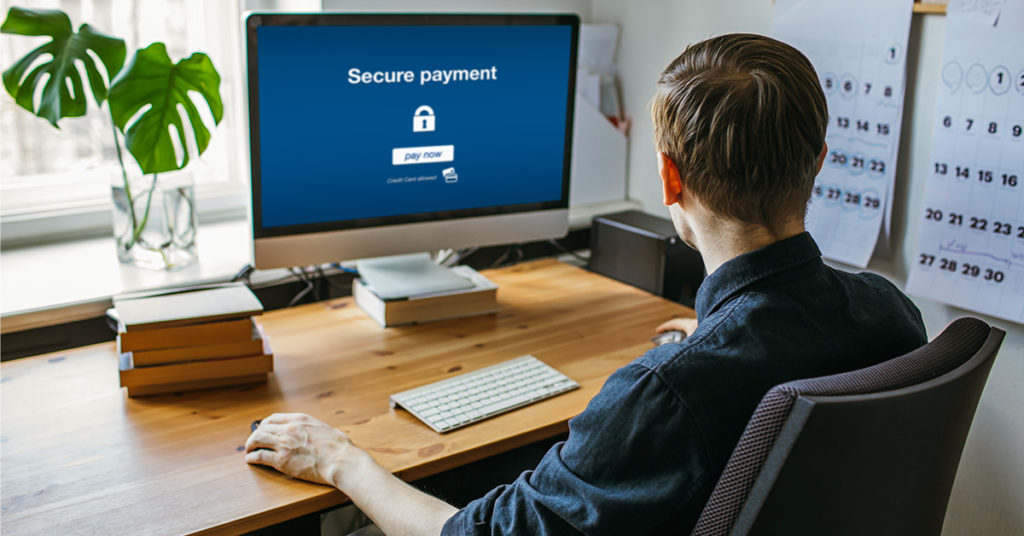Best Security Practices To Keep Your E-Commerce Safe

E-commerce offers the opportunity for retailers to expand and reach new customers, but the migration to online retailing has also created opportunities for scammers and hackers.
Just like the major malware, spyware and “You won a vacation!” scams making the rotation among consumers today, online retailers can be vulnerable to online mayhem.
Whether you manage your website or have a webmaster do it for you, knowing the basics of how your e-commerce security works will help you protect your business.
5 steps to securing your e-commerce website
Security is much more than having antivirus software installed on your computer. Use this checklist for your new site or as a self-audit for your existing e-commerce security.
1. Use a known secure e-commerce platform
Most e-commerce sites use a platform like Shopify or WooCommerce for hosting, listing products or services for purchase, processing payments and other functions. Here are some tips for keeping your platform secure:
- Choose a popular platform. Well-reviewed platforms are usually a good bet.
- Update plugins and software. When you add any security plugins to the platform, keep them updated. For Shopify, you can use an app such as Locksmith to help secure your storefront and control access permissions.
A secure platform provides the foundation. The next steps you take will protect your store’s safety.
2. Protect your passwords
Best practices for password protection include changing passwords frequently, choosing passwords that aren’t easy to guess and not sharing passwords with others. You shouldn’t give your password to anyone, even if they claim to have a legitimate reason for asking. It’s a common scam for thieves to impersonate tech support and ask for your personal information.
Multi-factor authentication takes passwords a step further and requires you to establish other controls, too, such as answering security questions to establish your identity. If this is available as a setting with any apps and online platforms you use, take advantage of this extra safeguard.
3. Secure your customers’ information
Your customers will feel better about shopping on your website if they know you’ve taken steps to protect their information.
- Build permission into your buying process. Before you share your customers’ information with a third party, get explicit permission. This protects your customers and your brand.
- Establish a privacy policy. Post this document on your website so your customers know what you’re doing to secure their information. Have an attorney write or review this first.
- Attend to payment gateway security. Do some research on how your online payment gateway is secured. Popular gateways such as PayPal and Stripe meet industry standards.
- Use HTTPS. Hypertext Transfer Protocol Secure (HTTPS) is the gold standard for online communication security, and you should have it enabled on your e-commerce site. This reassures customers that they’re using your website and not a fake site set up by scammers.
- Look for PCI compliance. Check that your platform is PCI (Payment Card Industry) compliant, meaning it meets industry standards for protecting customer payment information.
4. Stop hackers and malware
You can protect your data, software and online presence from the possible consequences of a hacking incident. Focus on backing up your data and choosing reliable services. Here’s how:
- Within your shopping platform, you can back up your store data. Rewind offers automatic backups for Shopify and BigCommerce to simplify this process. By backing up regularly, you can rescue your store’s information if you experience a hacking incident.
- Choose services and apps that offer support. Be sure to read any agreements carefully to see who’s responsible for fixing your site if hacking occurs.
- Guard against malware. Prevent it from infecting your computer by installing antivirus software, not clicking on links in emails from senders you don’t recognize and only installing software you get from genuine sources.
- Only download software programs from trustworthy websites. If you’re choosing to use an online marketplace to find an app, check the reviews and make sure you know if the marketplace screens their applications.
- Consider penetration testing. Penetration testing involves allowing an outside firm to test your site’s security to make sure your website can’t be hacked.
5. Fight fraud
Be aware of fraud. Simply put, if it seems fishy, tread carefully. Fraud comes in many forms, and scams frequently change, so it’s worthwhile to search online or ask someone you trust for a second opinion if you think you’re seeing something that could be fraud.
Requests to send money, unsolicited offers that seem too generous, deals that are too good to be true and news from a stranger suggesting your business is in jeopardy could all be examples of scams. Before you act, always gather more information and consider your options.
Security is a must-have
It’s as important to your e-commerce as great products, cool design and a roster of micro-influencers. Don’t bypass it. And be sure to ask your internet service provider how they may be able to help you secure your connection.